This article was medically reviewed by Tu Anh Vu, DMD. Dr. Tu Anh Vu is a board certified dentist who runs her private practice, Tu's Dental, in Brooklyn, New York. Dr. Vu helps adults and kids of all ages get over their anxiety with dental phobia. Dr. Vu has conducted research related to finding the cure for Kaposi Sarcoma cancer and has presented her research at the Hinman Meeting in Memphis. She received her undergraduate degree from Bryn Mawr College and a DMD from the University of Pennsylvania School of Dental Medicine.
There are 10 references cited in this article, which can be found at the bottom of the page.
wikiHow marks an article as reader-approved once it receives enough positive feedback. This article has 27 testimonials from our readers, earning it our reader-approved status.
This article has been viewed 2,164,377 times.
Experts agree gum disease can destroy the bones that support your teeth if left untreated, which can lead to tooth loss. Gum disease is a gum infection that destroys your soft tissue, which is typically preventable.[1] Research suggests that gum disease occurs when tartar builds up below your gum line, which you'll likely need to get cleaned by a dental hygienist.[2] You can prevent gum disease with good dental hygiene, and you may be able to improve your gum health with home treatments. However, it's best to see your dentist if you suspect you have gum disease, especially if you have bleeding gums or loose teeth.
Steps
Treating with Home Remedies
-
1Reduce stress. According to the Academy of General Dentistry (AGD), there's a link between stress and your dental health. People under stress have a compromised immune system that makes it harder for them to fight off the bacteria that causes periodontal disease and makes them more prone to gum infection, but also general problems such as diabetes or heart disease.
- Researchers have also learned that not all stress is created equal. In studies done at three different U.S. universities, participants experiencing financial worries were at greatest risk for periodontal disease.
-
2Make a sea salt solution. Dissolve a small amount of sea salt in a cup of warm water. Swish a sip of the solution in your mouth for 30 seconds and spit it out.[3] Repeat several times. Salt water will reduce swollen gums, gum bleeding and will also decrease the swelling caused by infection. However, if the infection has advanced to an abscess, then you will need antibiotics. Add this mouth rinse to your twice-daily brushing routine.Advertisement
-
3Apply tea bags. Steep a tea bag in boiling water for 2-3 minutes, remove it, and allow it to cool until you can handle it comfortably. Hold the cooled tea bag on the affected area of your gums and keep it there for about five minutes. The tannic acid in the tea bag can work effectively to relieve gum infection.
- Directly applying the tea bag to your gums is more effective than simply drinking the beverage. Plus, drinking too much tea has a dental downside: discolored, tea-stained teeth. Your teeth may change in color from yellow to brown and the stains are hard to remove, even after a professional cleaning
-
4Rub on some honey. Honey has natural antibacterial and antiseptic properties because of a substance called propolis in the honey, so you can put it to work treating your infected gums. Once you brush your teeth, rub a small amount of honey on the problem area of your gums.
- Given honey's high sugar content, you want to be careful you don't overapply it and do your best to put it on your gums only rather than on your teeth. Be especially careful to avoid putting honey on any teeth that may have cavities, as this will lead to tooth pain.
-
5Drink cranberry juice. Cranberry juice can prevent bacteria from sticking to your teeth, so try drinking up to 4 ounces of the unsweetened juice daily.
-
6Make a lemon paste. Make a paste from the juice of one lemon and some salt. Mix it well and apply to your teeth. Let it sit for a few minutes and gargle with warm water to rinse it off.
- Lemons offer a win-win solution for treating gum disease. First, they're an anti-inflammatory, which makes them helpful in treating infected gums. Not only that, but lemons contain vitamin C, which can help your gums fight off infection and reduce the bacterial colonies creating a local alkaline pH.
-
7Eat more vitamin C-rich foods. It's not just lemons that can help with gum disease, but also other foods full of vitamin C such as oranges, grapes, guava, kiwi mango, papaya, bell peppers, and strawberry. Vitamin C is an antioxidant, and antioxidants are found to promote connective tissue growth and bone regeneration, which can be affected by various gum problems.
-
8Increase your intake of vitamin D. Vitamin D has anti-inflammatory properties, so be sure you're getting enough of it when you're trying to heal swollen gums and prevent the condition from recurring. Older adults should particularly take note of this vitamin. According to the National Institutes of Health, higher blood levels of vitamin D seem to be linked to a reduced risk of gum disease in people age 50 and older.
- Get your vitamin D fix by soaking up the sun at least 15 to 20 minutes twice a week and eating D-rich foods such as salmon, whole eggs, sunflower seeds, and cod liver oil.
-
9Brush with baking soda. Baking soda neutralizes the acids in your mouth, thereby reducing the chances of tooth decay and gum disease, so it's more of a preventive measure than an actual treatment for gum disease. Add a small amount of baking soda to a bit of warm water and mix to form a paste. Use this paste to brush your teeth using a soft toothbrush and low pressure.
-
10Give up tobacco. Tobacco decreases your ability to fight infection and delays healing. Tobacco users are more likely than nonsmokers to have serious gum disease that doesn't respond as well to treatment and that leads to tooth loss.[4]
Using Drugstore Remedies
-
1Take a dental probiotic. Lozenges that contain Lactobacillus reuteri Prodentis a "friendly" bacteria that live in the intestines, are being touted as an effective treatment for gingivitis because of their ability to help restore the natural balance of the mouth after you use oral antiseptics and mouthwashes and gels that contain anti-bacterials.
-
2Pick up CoQ10. Co-enzyme Q10 (also known as ubiquinone) is a vitamin-like substance that helps the body convert sugars and fat into energy. According to the Mayo Clinic, early studies suggest CoQ10 taken by mouth or placed on the skin or gums may aid in the treatment of periodontitis.
-
3Gargle with Listerine or a generic version. With the exception of prescription mouthwash, the Listerine formula has been shown to be one of the most effective mouthwash formulas for reducing plaque and gingivitis. [5]
- It's recommended that you use it for 30 seconds twice a day, but always dilute it 50/50 with plain water.
- While the essential oils that make up this solution can cause a burning sensation in the mouth, people often adjust to it after a few days of regular use.
-
4Spray it on. Try incorporating the use of a spray containing chlorhexidine (CHX), a powerful anti-bacterial with plaque-inhibiting properties, in your dental care routine. One study on elderly patients, a group at risk for periodontal disease, found that a once-daily application of a 0.2% CHX spray reduced plaque accumulation and inflammation caused by gingivitis.[6]
-
5Get Gengigel. This product contains hyaluronic acid, a natural substance found in the connective tissues of the body. Research has shown that hyaluronate has anti-inflammatory, antiedematous and anti-bacterial properties that are effective in the treatment of gingivitis and periodontitis.[7] When Gengigel is applied to gums, it stimulates the production of healthy new tissue. In trials at the University of Rostock, Germany, scientists found it can boost tissue healing by up to a half, increase blood supply, and reduce inflammation.[8]
-
6Use a tea tree oil toothpaste. Tea tree oil kills bacteria. Dental plaque is a bacteria. Thus, tea tree oil toothpaste can help get rid of plaque and ease gum pain.
- You can also add a drop of tea tree oil to your regular toothpaste every time you brush. If you use a tea tree oil extract, be sure not to swallow it, as it can cause stomach irritations, including diarrhea.[9]
Expert Q&A
Did you know you can get expert answers for this article?
Unlock expert answers by supporting wikiHow
-
QuestionWhy are my gums causing me pain?
 Tu Anh Vu, DMDDr. Tu Anh Vu is a board certified dentist who runs her private practice, Tu's Dental, in Brooklyn, New York. Dr. Vu helps adults and kids of all ages get over their anxiety with dental phobia. Dr. Vu has conducted research related to finding the cure for Kaposi Sarcoma cancer and has presented her research at the Hinman Meeting in Memphis. She received her undergraduate degree from Bryn Mawr College and a DMD from the University of Pennsylvania School of Dental Medicine.
Tu Anh Vu, DMDDr. Tu Anh Vu is a board certified dentist who runs her private practice, Tu's Dental, in Brooklyn, New York. Dr. Vu helps adults and kids of all ages get over their anxiety with dental phobia. Dr. Vu has conducted research related to finding the cure for Kaposi Sarcoma cancer and has presented her research at the Hinman Meeting in Memphis. She received her undergraduate degree from Bryn Mawr College and a DMD from the University of Pennsylvania School of Dental Medicine.
Board Certified Dentist In most cases, your gums are hurting because you either have a cold sore, or some kind of gum disease. If you do have a cold sore, don't worry about it too much; they're exceptionally common, especially in the colder months. If you have gum disease, that's a more serious issue. In either case, your best bet is to see a dentist.
In most cases, your gums are hurting because you either have a cold sore, or some kind of gum disease. If you do have a cold sore, don't worry about it too much; they're exceptionally common, especially in the colder months. If you have gum disease, that's a more serious issue. In either case, your best bet is to see a dentist. -
QuestionHow do I tighten and strengthen gum pockets?
 Cristian Macau, DDSDr. Macau is an oral surgeon, periodontist, and aesthetician at Favero Dental Clinic in London. He received his DDS from Carol Davila University of Medicine in 2015.
Cristian Macau, DDSDr. Macau is an oral surgeon, periodontist, and aesthetician at Favero Dental Clinic in London. He received his DDS from Carol Davila University of Medicine in 2015.
Doctor of Dental Surgery Gum pockets are a local infection near the root of your tooth. All you can do is continue a complete oral hygiene routine: brush 2 times a day, use dental floss , rinse with mouthwash and use an oral irrigator. Schedule an appointment with a periodontist and prepare for a small surgical intervention.
Gum pockets are a local infection near the root of your tooth. All you can do is continue a complete oral hygiene routine: brush 2 times a day, use dental floss , rinse with mouthwash and use an oral irrigator. Schedule an appointment with a periodontist and prepare for a small surgical intervention. -
QuestionCan I kiss if I have gum disease?
 Cristian Macau, DDSDr. Macau is an oral surgeon, periodontist, and aesthetician at Favero Dental Clinic in London. He received his DDS from Carol Davila University of Medicine in 2015.
Cristian Macau, DDSDr. Macau is an oral surgeon, periodontist, and aesthetician at Favero Dental Clinic in London. He received his DDS from Carol Davila University of Medicine in 2015.
Doctor of Dental Surgery
References
- ↑ https://www.mayoclinic.org/diseases-conditions/periodontitis/symptoms-causes/syc-20354473
- ↑ https://www.cdc.gov/oralhealth/conditions/periodontal-disease.html
- ↑ Tu Anh Vu, DMD. Board Certified Dentist. Expert Interview. 10 April 2020.
- ↑ Tu Anh Vu, DMD. Board Certified Dentist. Expert Interview. 10 April 2020.
- ↑ http://health.nytimes.com/health/guides/disease/periodontitis/prevention.html
- ↑ http://hera.ugr.es/doi/14978787.pdf
- ↑ http://www.ijdr.in/article.asp?issn=0970-9290;year=2010;volume=21;issue=4;spage=575;epage=578;aulast=Bansal
- ↑ http://www.dailymail.co.uk/health/article-67661/Get-smile-back.html
- ↑ http://healthfree.com/blog/blog/tea-tree-oil-treats-gum-disease-naturally/
About This Article
To treat gum disease with homemade remedies, dissolve a pinch of sea salt in a cup of warm water, and swish it around in your mouth for 30 seconds before spitting it out, which can help reduce swelling and bleeding in your gums. Repeat twice a day after you brush your teeth. You can also rub some honey on your gums after brushing your teeth since honey has antibacterial properties that can help with infected gums. Additionally, try drinking 4 ounces of cranberry juice every day, which can help prevent bacteria from sticking to your gums. For more tips from our Dental co-author, like how to prevent gum disease by brushing with baking soda, read on!
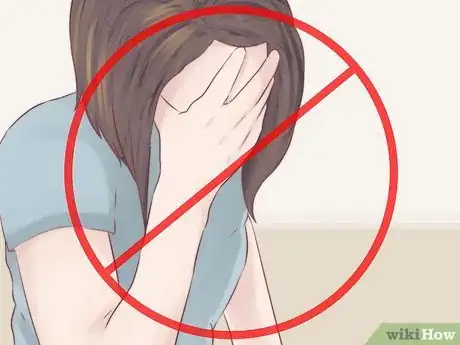
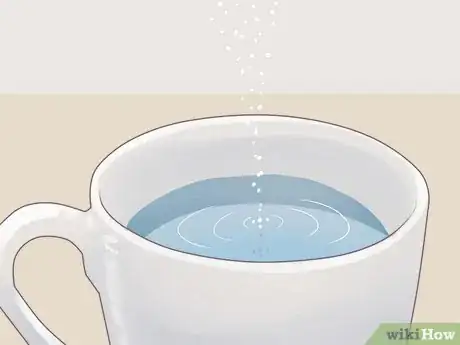

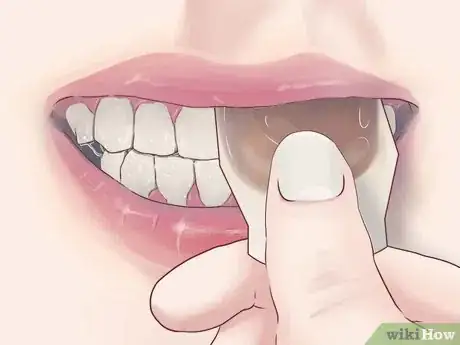


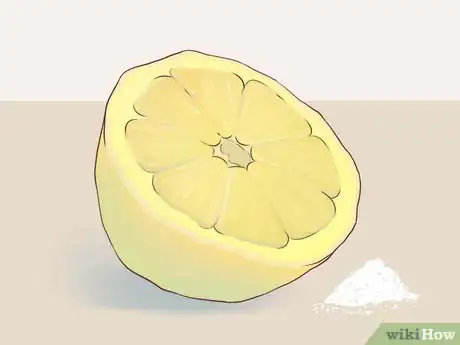

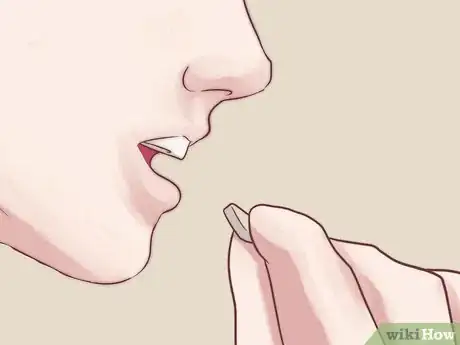
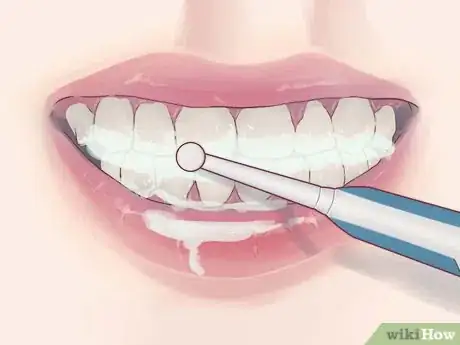
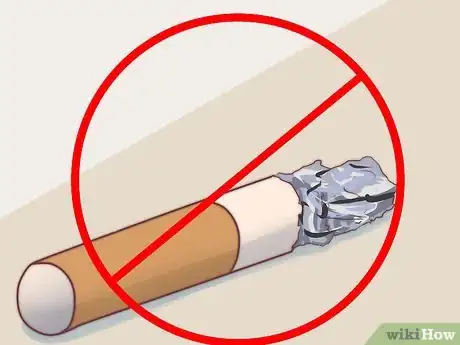

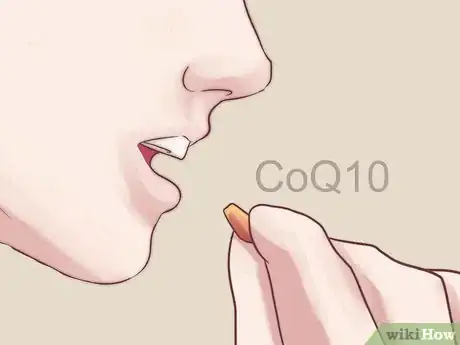









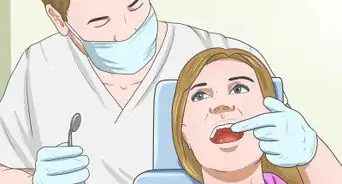



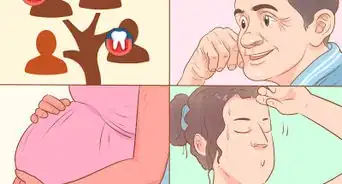
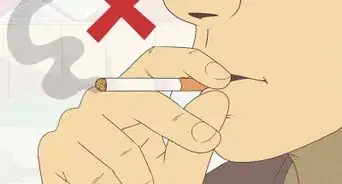
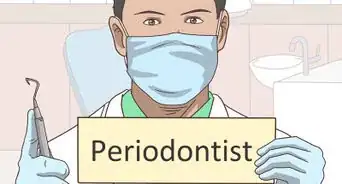


















































Medical Disclaimer
The content of this article is not intended to be a substitute for professional medical advice, examination, diagnosis, or treatment. You should always contact your doctor or other qualified healthcare professional before starting, changing, or stopping any kind of health treatment.
Read More...